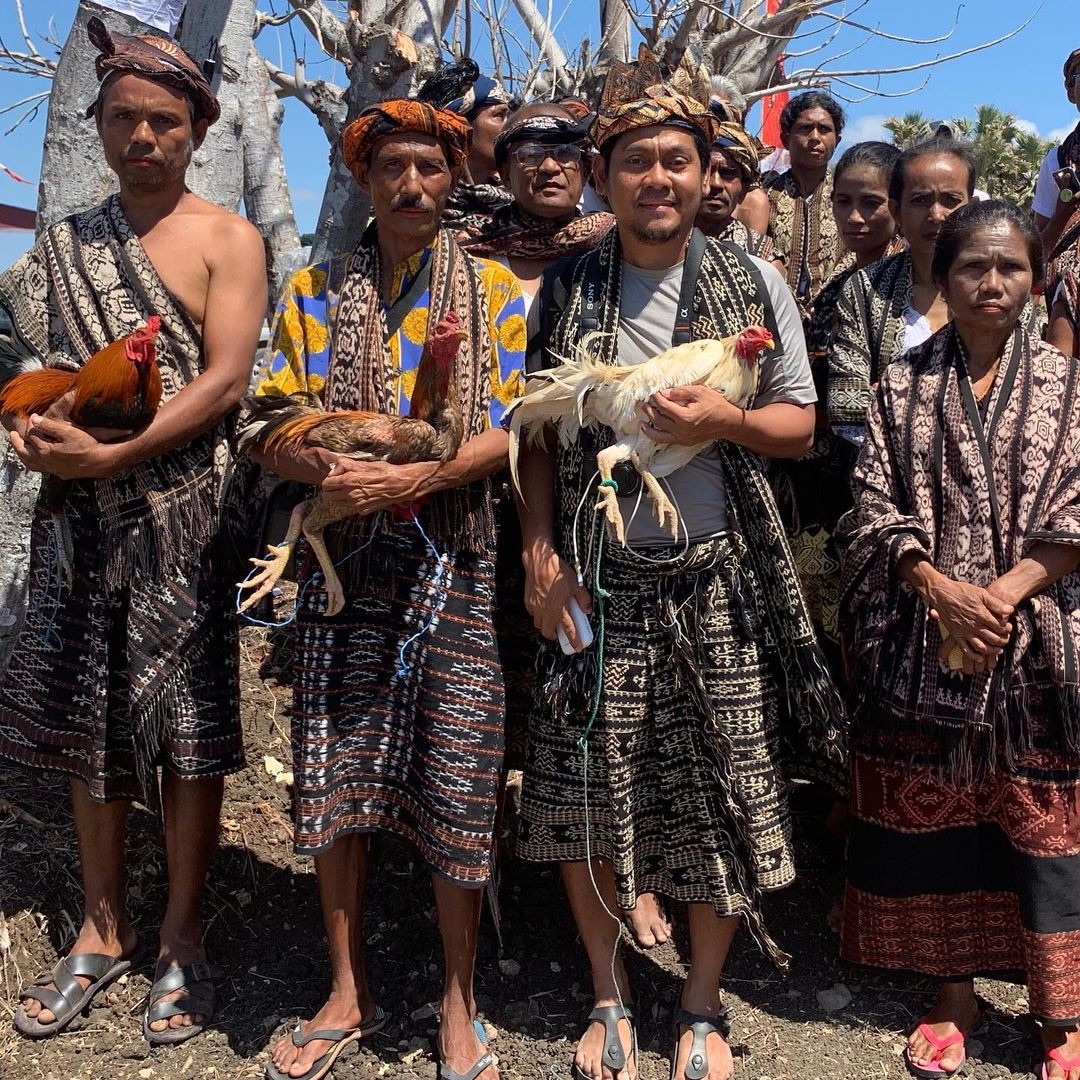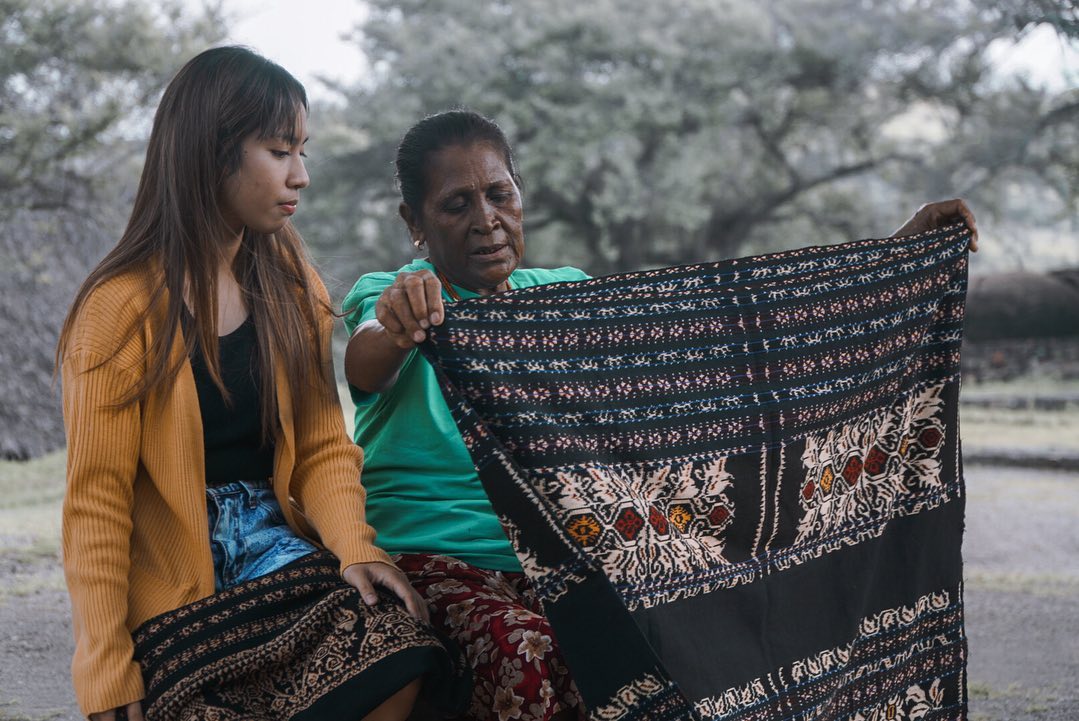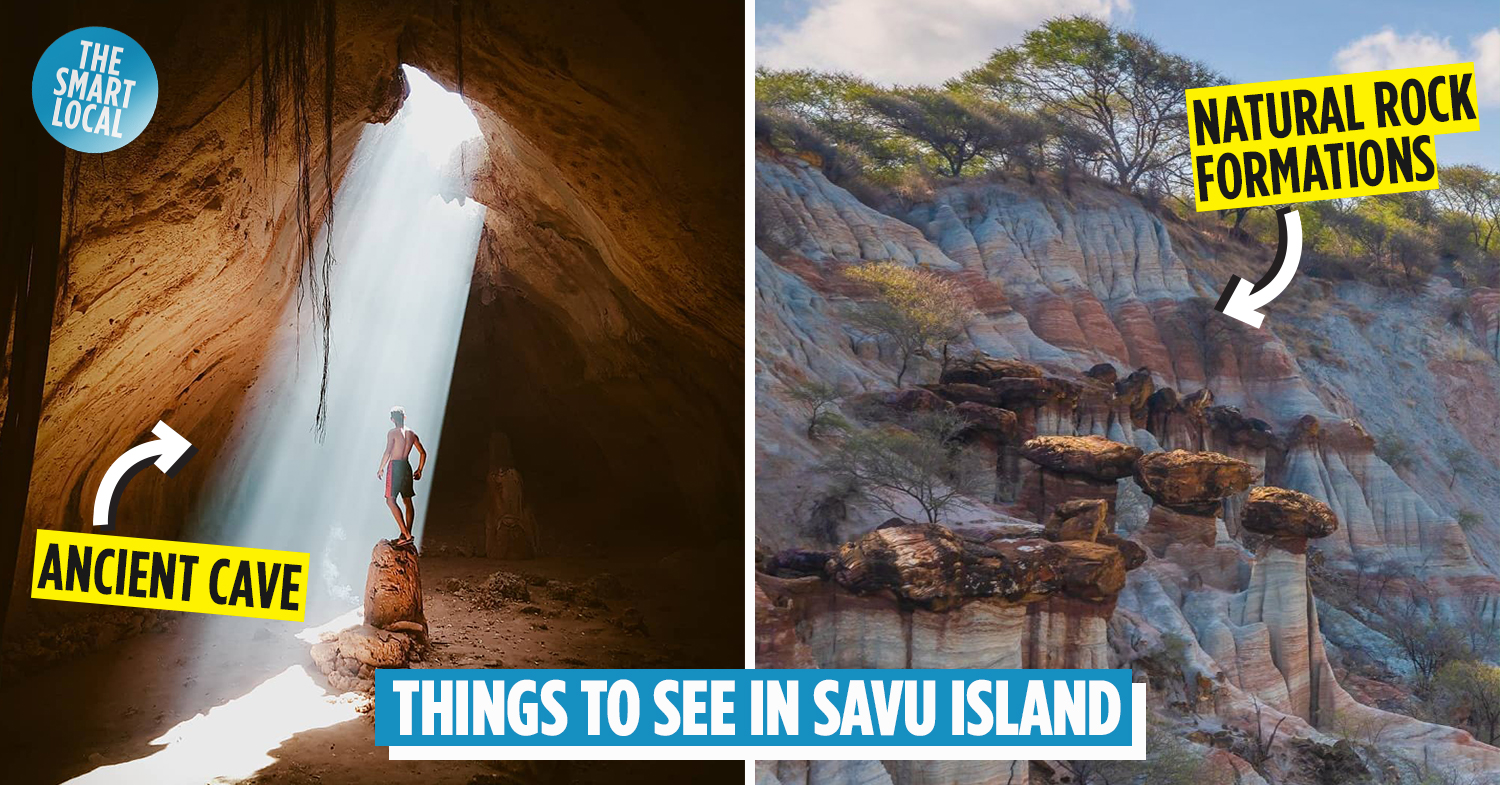Savu Island- Indonesia’s untouched island
Though Savu Island isn’t a popular tourist destination and is largely unheard of, this island has a lot to offer in terms of archaeologist sites, local culture, and vast natural rock formations that resemble Mars.
Located in the East Nusa Tenggara Province and sandwiched between Sumba and Rote Islands, Savu Island also has beautiful virgin beaches that lead straight to the Savu Sea.
Ancient caves and vast rock formations
 Mabala Cave
Mabala Cave
Image credit: @miss_yane
Savu Island is known for its ancient-looking caves and rock formations that make for a great photo spot or even a unique pre-wedding photo. Start at the Goa Lie Mabala, also known as the Mabala Cave, a huge cave located 30 minutes away from the island’s main village, Seba.
Shaped like a dome, the cave’s ceiling has a hole that lets sunbeams seep in, making the area look like a movie set of Journey To The Center of the Earth. Immerse in the history of the island by visiting the centuries-old Malaba Cave.
 Mabala Cave
Mabala Cave
Image credit: @maliqkakaban
Head to Savu Island’s natural rock formations known as Kalabba Madja, a vast array of gray and rust-red rocks that resemble a Martian landscape.

Kalabba Madja
Image credit: @salmon_sabu
Kalabba Madja is more than just rocks – it is also the site of an ancient ceremony by the Savunese people to express their gratitude to the rocks, where it is believed that the gods reside.

Image credit: @triptrapliburan
Dutch-influenced dyed ikat, and sacred stones

Locals and visitors in traditional ikat
Image credit: @maliqkakaban
Apart from the natural beauty of Savu island, the island is still inhabited by tribes that have resided in the island for centuries. Many of the island’s cultures have deep-rooted history and cultural practices, such as the Savu Ikat which is a traditional sarong woven with different motifs and natural mordana and indigo dyes.
Used for ancient ceremonies native to the island, some of the sarongs found there even have Dutch-influenced motifs, inspired from Dutch artifacts that were traded with the Royal Family of Savu back during the colonial era.

Image credit: @aldi_geri
Savu is also known to have many archaeological items that date back for centuries and have deep spiritual meaning behind them. Sacred stones, called Megalitik Namata, have survived in their original form from the Majapahit era and are untouched to this date.

Megalitik Namata – sacred stones
Image credit: @mytrip_magazine
How to get to Savu Island and where to stay

Susi Air
Image credit: @tristan_anakin_bagaskara
There are several ways to get to Savu, but the fastest route is via air. From Jakarta, head to Kupang- a 3-hour flight journey to the capital of the East Nusa Tenggara province – where Savu, Rote, and Sumba Islands are located. There are many domestic flights that fly to Kupang regularly from Jakarta.
Upon landing at Kupang’s El Tari International Airport, you’ll need to board another flight to take you to West Savu. Only one airline flies from Kupang to Savu which is Susi Air, hence, make sure to check Susi Air’s flight timings before booking other connecting flights.
You can also head to Savu Island from Bali with the same route but in a shorter time.
There are many bed and breakfast hostels to stay at in Savu, with very few large hotels available. It’s best to check out local travel sites such as Traveloka, Agoda, Penginapan, and even TripAdvisor for the latest visitor reviews.
Capture culture and history at Savu Island
While this island has beautiful beaches like most islands in Indonesia, Savu Island’s rare, rich native culture, and history sets it apart. Savu Island is a great example of how centuries-old culture can be preserved and passed down the generations, and here, you’re sure to get a taste of the island’s unique culture everywhere you go.
Also check out:
Cover image adapted from: @traveller_ntt and @triptrapliburan
Enjoying The Smart Local Indonesia? Follow us on Facebook, Twitter, Telegram, and Instagram for more stories like this. If you have a story to share, email us at [email protected].
